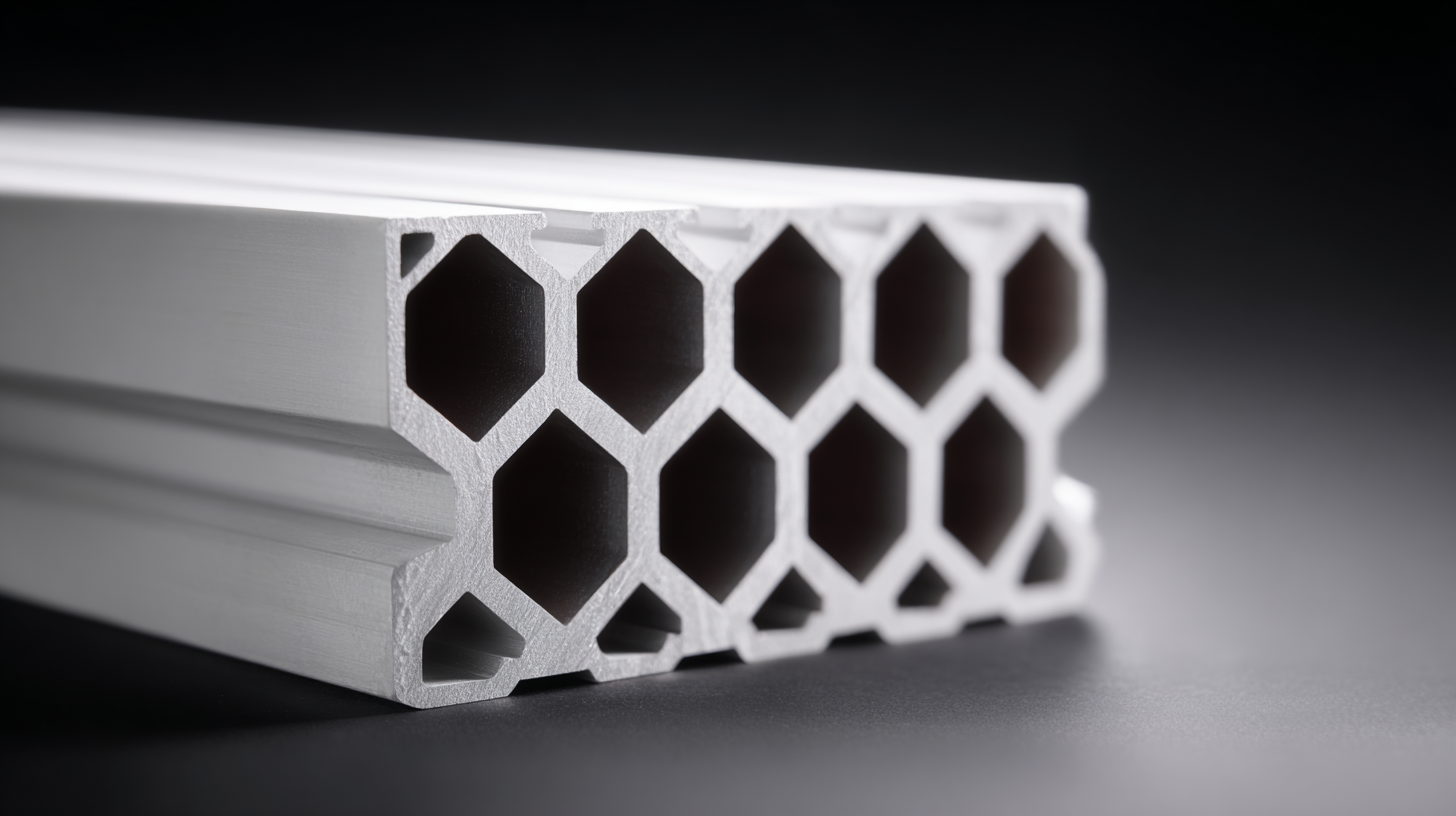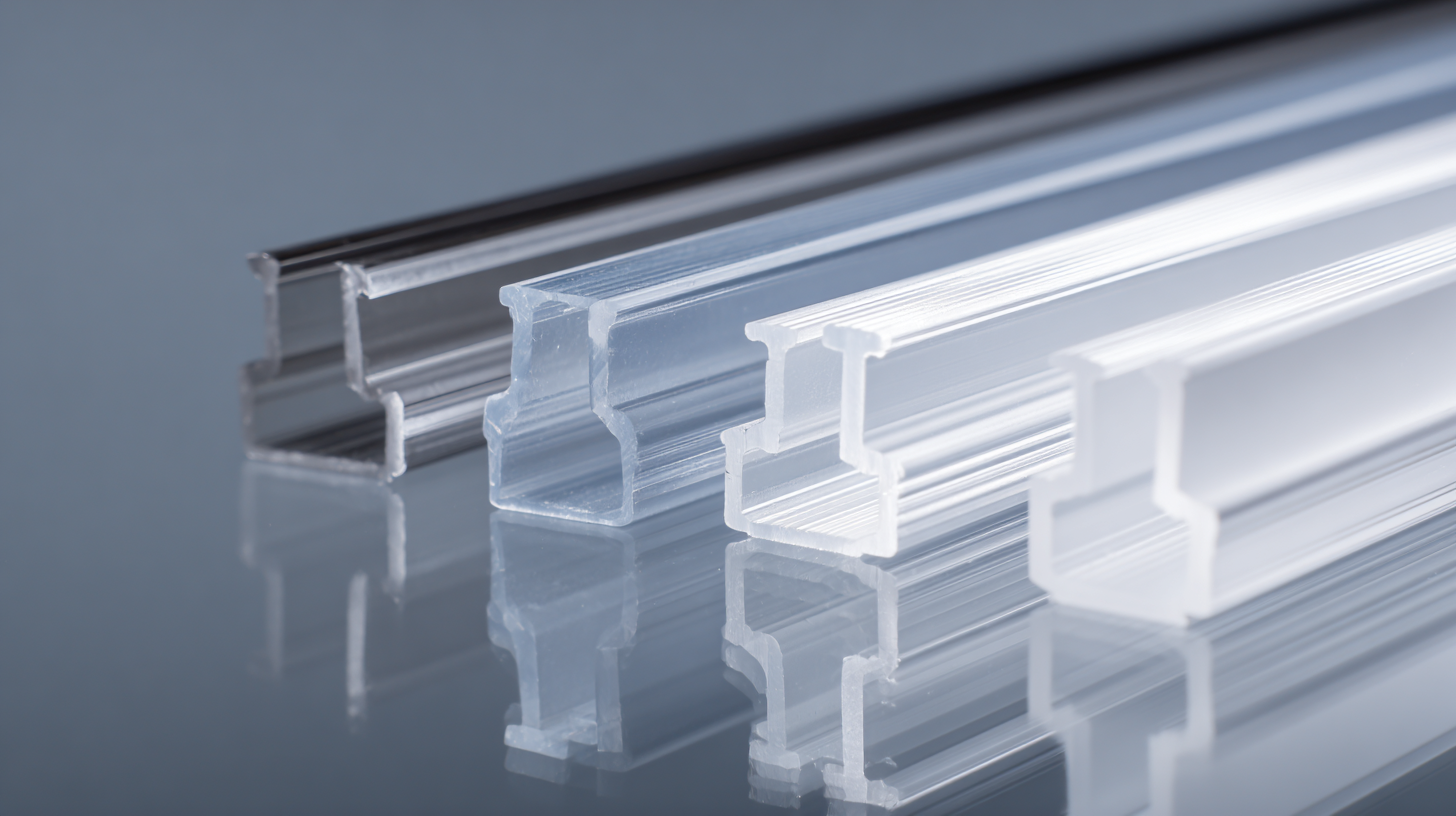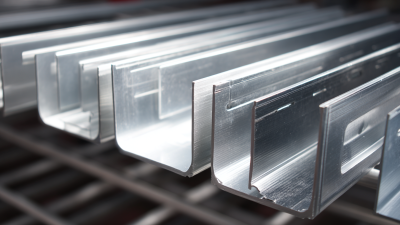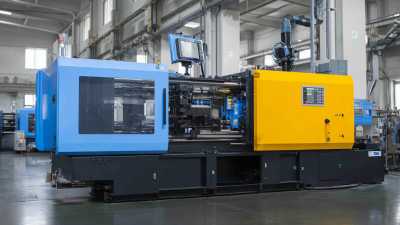Exploring the Versatility and Applications of Plastic Profiles in Modern Design
In recent years, the construction and design industries have witnessed a significant surge in the utilization of plastic profiles, driven by their remarkable versatility and aesthetic appeal. According to a report by the American Plastics Council, the demand for plastic materials is projected to reach 1.3 trillion pounds by 2025, reflecting a growing preference for lightweight, durable alternatives to traditional materials.

Plastic profiles, in particular, offer unique advantages in terms of design flexibility, allowing architects and designers to bring innovative concepts to life while maintaining cost-effectiveness. Their applications span a wide range of sectors, from residential and commercial buildings to automotive and furniture design, highlighting the adaptability of plastic profiles in meeting diverse functional and stylistic needs. As the industry continues to evolve, understanding the myriad possibilities presented by these materials is crucial for modern design practices.
The Evolution of Plastic Profiles: Key Statistics and Trends in Modern Design
The evolution of plastic profiles has significantly influenced modern design, with key statistics showcasing their increasing prevalence across various industries. Initially seen as a mere alternative to traditional materials, plastic profiles have transformed into a versatile component, adapting to the specific needs of different applications such as architecture, automotive, and consumer goods. For instance, over the past decade, the global market for plastic profiles has seen a compound annual growth rate (CAGR) of around 5.3%, indicating a robust demand and a shift in design paradigms where functionality meets aesthetic appeal.

Moreover, trends in sustainability and innovation are driving advancements in plastic profile manufacturing. The introduction of bio-based and recycled plastics not only enhances the environmental footprint of products but also caters to consumer preferences for eco-friendly solutions. As designers and manufacturers increasingly focus on reducing waste and promoting circular economy practices, the incorporation of advanced plastic profiles offers endless possibilities. These developments represent a profound change in how plastic is perceived, moving from a simple utility material to an essential element in sophisticated and sustainable design solutions.
Diverse Applications: How Plastic Profiles Enhance Functionality in Various Industries
Plastic profiles have become a cornerstone in modern design across various industries, enhancing functionality and promoting sustainability. The versatility of plastic profiles allows for applications in construction, automotive, and consumer products, among others. For instance, in the construction sector, plastic profiles provide durable solutions that contribute to energy efficiency; reports indicate that building materials account for around 40% of global energy use, making the role of innovative materials critical in reducing overall consumption.
Moreover, the evolution of smart coatings integrated with plastic profiles is transforming product functionalities. These smart coatings not only provide aesthetic enhancements but also serve protective roles, as noted in recent reviews on their applications. Such advancements are reflected in the global market, which is projected to reach USD 12 billion by 2026, driven by the increasing demand for multifunctional materials. Industries are also emphasizing sustainability, with a shift towards bio-based plastics derived from agricultural byproducts, embodying a circular economy approach. This transition is vital, considering that the agro-food supply chain generates millions of tons of waste annually, indicating a significant opportunity for integrating sustainable practices into the use of plastic profiles.

Sustainability in Design: The Role of Recyclable Plastic Profiles in Modern Architecture
The integration of recyclable plastic profiles in modern architecture is a testament to the industry's commitment to sustainability. As architects and designers increasingly prioritize eco-friendly materials, plastic profiles offer a promising solution due to their ability to be repurposed and reused. These profiles can be molded into various shapes and sizes, making them adaptable to various design needs while minimizing waste. By utilizing recyclable plastics, architects can significantly reduce the carbon footprint of their projects, aligning with global sustainability goals.
Moreover, the versatility of plastic profiles extends beyond environmental benefits; they also enhance the aesthetic appeal of modern structures. Available in an array of colors and finishes, plastic profiles can complement diverse architectural styles. This flexibility allows designers to experiment with innovative forms and functionalities, ultimately transforming spaces while maintaining ecological integrity. By embracing recyclable plastic profiles, the architecture industry can foster a circular economy, promoting the use of materials that support sustainability without compromising design creativity.
Innovative Design Techniques: Creating Unique Aesthetics with Plastic Profile Modifications
The innovative use of plastic profiles in modern design opens new avenues for creating unique aesthetics that cater to both functionality and visual appeal. Recent advancements in design techniques allow for the modification of these profiles, enabling designers to tailor shapes, colors, and textures that resonate with contemporary consumers. As seen in the latest automotive modifications, the applications of plastic profiles are transforming vehicles into distinctive representations of style and performance. The recent introduction of special editions showcases how aesthetic modifications can elevate a product's identity, enhancing consumer attraction through personalized touches.
Moreover, the versatility of plastic profiles extends beyond automotive design. From furniture to architectural elements, they can be adapted to create striking visual contrasts or harmonious blends, depending on the desired effect. By integrating innovative modifications, designers can push the boundaries of creativity, introducing unique solutions that enrich environments while maximizing the functionality of the materials used. This trend highlights the growing importance of aesthetic considerations in design, demonstrating how plastic profiles can be pivotal in crafting eye-catching, modern creations that stand out in a competitive marketplace.
Future Forecast: Market Predictions for Plastic Profile Usage in Design until 2030
The landscape of plastic profiles in modern design is set to undergo significant transformation as we approach 2030. With the biodegradable plastics market projected to reach USD 33.52 billion by 2029, designers are increasingly recognizing the potential of these materials to meet both aesthetic and environmental demands. Innovations will likely prioritize sustainability, leveraging bioplastics that reduce ecological footprints while maintaining functionality. This shift not only aligns with consumer preferences but also addresses the pressing need for responsible production and waste management.
In tandem, the global projections for plastic usage highlight the urgent need for circular economy practices. As awareness of plastic pollution grows, market trends indicate a shift towards recycling and the incorporation of bioplastics as viable alternatives. The chemical industry is expected to adapt by emphasizing innovation and resilience, establishing new value chains that prioritize sustainability. As we look forward to 2030, the interplay between plastic profiles in design and eco-conscious practices will shape the future of the industry, fostering a new era of creative possibilities grounded in environmental responsibility.
Related Posts
-

How to Select the Right Plastic Profiles for Your Next Project
-

Ultimate Checklist for Selecting the Right Plastic Profiles for Your Projects
-

How to Choose the Right Plastic Coating for Your Manufacturing Needs
-

Top Strategies for Optimizing Plastic Angle Products in Your Business
-

Ultimate Guide to Selecting the Right Injection Molding Tooling for Your Business Needs
-

Unlocking the Secrets of Low Cost Injection Molding: A Comprehensive Guide for Innovators
